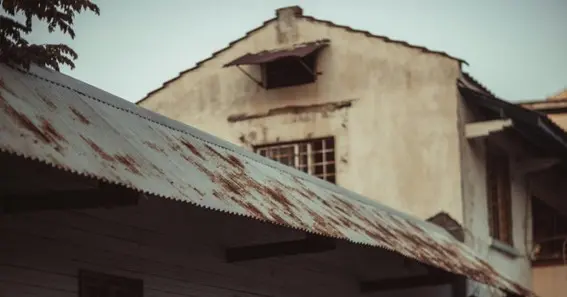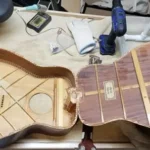Maintaining a well-functioning roof is vital for the safety and value of your home. It serves as the primary barrier against the elements, protecting your living space and belongings from damage. Ignoring early signs of wear or damage can lead to costly repairs and potentially jeopardize your home’s structural integrity.
Tampa’s climate poses unique challenges for homeowners. Frequent rain, high humidity, and hurricane seasons can damage roofing materials, causing them to wear out faster. The combination of intense sun and heavy storms makes regular maintenance and prompt repairs essential. Delaying necessary fixes in Tampa can lead to leaks, mold growth, and more expensive problems down the road.
This article lists some signs that indicate your roof needs immediate attention.
- Water Leaks Inside the Home
Also Read : Blurring Boundaries – Creating Seamless Indoor-Outdoor Living Spaces
One of the most obvious signs of damage is water entering your home. This often appears as stains or discoloration on ceilings and walls. You may also notice damp spots or water dripping during or after heavy rain. Leaks should never be ignored, as they can lead to further structural damage and promote mold growth. Addressing leaks promptly can prevent these issues from worsening and save you money in the long run.
- Constant Need for Repairs
Also Read : Is 1 mL Of Testosterone Per Week Sufficient For Effective Therapy?
If you find yourself constantly calling professionals for repair for issues like replacing shingles or patching leaks, it could indicate a deeper problem. Consistent repairs suggest that the structure may be compromised or nearing the end of its lifespan. Instead of repeatedly spending money on small fixes, it’s worth considering a professional assessment. An experienced contractor can determine whether a full roof repair or replacement is the better long-term solution. If you’re looking for experienced professionals for roof repair Tampa has numerous options. One name that stands out for experience, expertise, and high-quality services is Southern Pro Restoration, which has been helping homeowners restore their roofs for over a decade.
- Sagging Areas
A sagging surface is a clear sign of trouble. This often occurs when moisture becomes trapped, causing the structure beneath to weaken. Over time, the weight of accumulated water or debris can lead to significant structural issues. If you notice any sagging, it’s important to act quickly. Ignoring this sign could result in more severe damage or even a collapse, which poses serious safety risks.
- Granules in the Gutters
If you find granules from shingles collecting in your gutters, the protective coating on your shingles may be worn away. Granule loss is a common sign of aging materials or damage from harsh weather. It reduces the surface’s ability to protect your home from water and UV rays. Regular inspections and prompt repairs can help address this issue before it leads to more significant problems.
- Rising Energy Bills
An increase in energy costs can sometimes be traced back to damage that allows air to escape. When there are gaps or leaks, your heating and cooling systems have to work harder to maintain a consistent indoor temperature. If your energy bills are higher than usual, it’s worth inspecting for signs of damage. Fixing these issues can restore energy efficiency and lower your utility costs.
- Mold, Mildew, or Moss Growth
The presence of mold, mildew, or moss on your roof indicates trapped moisture, which can cause significant damage over time. These growths often appear in shaded areas or where water drains poorly. Left untreated, the moisture can seep into the structure, leading to rot and weakening the roof’s overall integrity. Removing moss or mold promptly and addressing the underlying moisture issues is essential. Regular inspections and cleaning can prevent these problems from escalating. If the growth is extensive, consider seeking professional help to ensure it’s handled safely and effectively.
- Sunlight Coming Through the Roof
If you notice sunlight streaming through your attic, it’s a sign that there are gaps or holes. These openings allow water, pests, and drafts to enter, potentially leading to further damage and increased energy costs. Regularly inspecting your attic during the day can help identify these issues early. Fixing holes promptly can protect your home from weather elements and improve its overall insulation.
- Loose or Damaged Flashing
Flashing is a crucial component that seals the joints and edges around vents, chimneys, and skylights to prevent water from entering. Over time, flashing can become loose, corroded, or damaged due to weather or wear and tear. Damaged flashing can lead to leaks in these vulnerable areas, causing water damage inside your home. Replacing or repairing loose flashing is a simple yet effective way to maintain the integrity of your roof and avoid costly repairs.
- Roof Age Exceeding Its Lifespan
Every roof has a lifespan based on its material. For example, asphalt shingles typically last 20–30 years, while metal and tile options can last much longer. If your roof is near its expected lifespan or has exceeded it, it’s more prone to issues like leaks, sagging, and material degradation. Even if there are no visible signs of damage, a professional should inspect an older roof regularly. Upgrading to a new roof can save you from frequent repairs and improve your home’s energy efficiency and resale value.
- Storm Damage or Debris Impact
Storms, high winds, and falling debris can cause immediate damage, such as cracked shingles, broken tiles, or punctures. These issues may not always be visible from the ground, but if left unaddressed, they can lead to leaks and structural problems. After a severe storm, conduct a thorough inspection or hire a professional to assess the condition of your roof. Promptly addressing storm-related damage can prevent small issues from becoming larger, more expensive problems.
Your roof plays a vital role in protecting your home from the elements, and recognizing the signs of damage is essential for maintaining its integrity. Issues like leaks, sagging, mold growth or storm damage can escalate quickly if not addressed. Regular inspections and timely repairs are key to avoiding costly replacements and ensuring your home remains safe and comfortable. If you notice any of the signs discussed, don’t delay.










